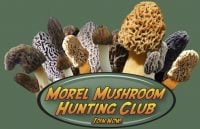Russula mariae (Purple-Bloom Russula)
- Photos
- Videos
- Description
- Habitat
- Edibility
- Similar Species
- Preserving (Drying or Freezing)
- Recipe Suggestions
- References
Join The Club Now!
Photos:
Videos:
N/A
Description:
This gorgeous Russula is common under oaks in eastern North America. It has a purple cap that is covered with a white dusting or “bloom,” and its stem is flushed with a paler version of the cap color. The spore print is cream colored to pale yellow, and the taste is mild or slightly oily and unpleasant. As the illustrations to the right demonstrate, Russula mariae can display cap colors that range fairly far away from purple, including olive, yellow, and brown–or it can be mottled with several shades at once. Russula alachuana is probably a synonym.
Cap: 2-7 (-10) cm; convex when young, becoming broadly convex to flat with a shallow depression; dry; when fresh with a whitish bloom or dusting; purple to purplish red, or reddish, pinkish, or even olive, yellow, or brown–sometimes mottled with several of these shades; the margin usually lined by maturity; the skin peeling fairly easily, usually more than halfway to the center.
Gills: Attached to the stem or beginning to run down it; close or crowded; sometimes forking; white but soon cream colored to pale yellow; occasionally with pinkish edges from contact with the stem in the button stage.
Stem: 2-6 cm long; .5-2 cm thick; usually flushed pink or purplish; dry; fairly smooth, but feeling greasy or sticky to the touch.
Flesh: White; unchanging when sliced.
Odor and Taste: Odor oily; taste mild, slightly acrid, or oily and unpleasant.
Chemical Reactions: KOH on cap surface orange. Iron salts on stem surface negative.
Spore Print: Creamy to pale yellow.
Habitat:
Ecology: Mycorrhizal with hardwoods, especially oaks; growing scattered to gregariously; common and frequently encountered; late spring to fall; widely distributed east of the Rocky Mountains.
Edibility:
It is not as highly flavored as some other russulas but I have no hesitation in placing it among the edible species.
Similar Species:
- Look-alike: R. cyanoxantha, which is so similar that some mycologists have considered Russula variata to be a variety of Russula cyanoxantha.
Preserving (Drying or Freezing):
All Russulas are best dried.
Recipe Suggestions:
N/A
References:
https://www.mushroomfarm.com/mushroom-species/russula/russula-mariae.html
https://www.mushroomthejournal.com/greatlakesdata/Taxa/Russumaria310.html

















































